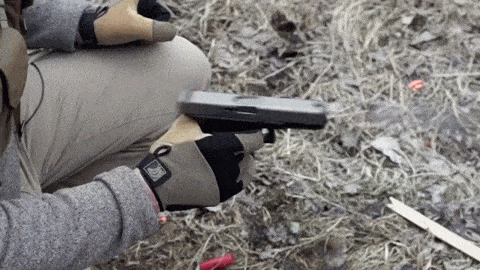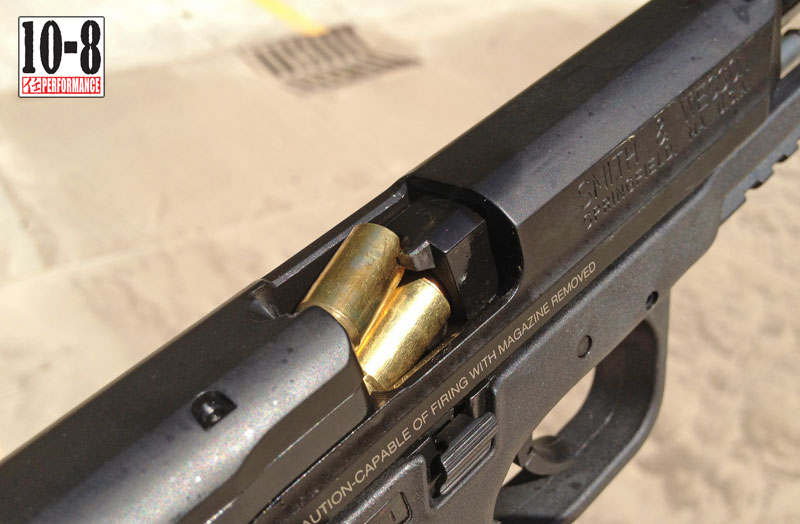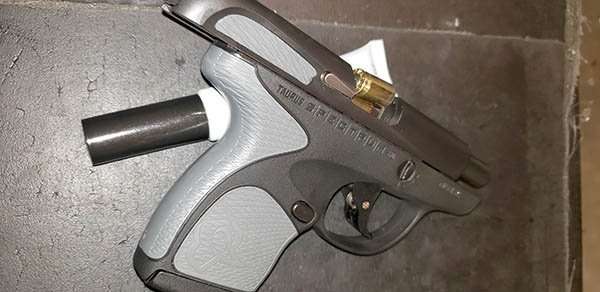

Stoppages with an autoloader are never a good thing and you should do everything possible to track down the reason. Is it a stovepipe jam where the empty casing did not completely eject? Is it a double feed? Was there a failure to extract? Be sure to include which ammunition the stoppage occurred with and also which magazine you were using at the time of the jam. If the gun jams, do your best to describe the problem. For example, make notes of heavy recoil, bright muzzle flash, or any stoppage. You should also keep a notebook while you’re conducting your evaluation. Save your targets and make notes on them that include the ammunition maker, bullet type and weight, and velocity, if you know it. Every gun will have one load that it shoots better than all of the rest. One load averaged over three inches at 25 yards while the other grouped consistently under one inch.

Velocities between the two loads were within 50 feet per second and the recoil impulse seemed identical. 40 S&W and had two 180-grain FMJ loads from two different American ammunition companies. You’ll be amazed that two very similar rounds have two very different results. Your department may only issue or authorize one round, but if you’re conducting an evaluation on your own try to include as many different rounds as you can scrounge up. Keep in mind that your ammunition selection will play a very important part in your accuracy results.
#Stovepipe gun jam full
For a sight picture I align the front and rear sights and then carefully balance the full diameter of the target on the center of the front sight. Using these small targets requires a greater degree of precision. Rather than use a large diameter bull’s eye for the 25-yard groups, I’ve found that I’m able to shoot tighter groups using two-inch-diameter targets. What we’re interested in at this point is the weapon’s mechanical accuracy. It’s enough to screw up an otherwise good group, but not enough for concern for duty use. For practical purposes, that hand-cycled round might impact a half-inch away from the others. The reason for this is that the first round is hand cycled and will oftentimes shoot to a slightly different point of impact than the following rounds. Then I’ll fire the first round into the backstop before shooting the next five at the target. When I’m testing a semi-auto for accuracy I usually load six rounds into the magazine, seat the magazine, and chamber a round. You’ll want to use a firm, two-handed firing grip when shooting for groups. When you’re evaluating a gun for accuracy your goal is to remove any external influences that might negatively impact your efforts. Remember, the key to good shooting is consistency.

You’ll want to adjust your seat so that when you look at the sights you aren’t raising or lowering your head uncomfortably.

The bench I use is deep enough that I can extend both arms for a two-handed hold and still have both elbows supported. You’ll want to make sure that your bench is absolutely wobble free. The BenchMaster cradles the gun and makes it easy for me to watch the sights while I press the trigger. The idea here is to hold the pistol absolutely still while pressure is incrementally added to the trigger until the shot breaks. I use the Millett BenchMaster when I test a gun for accuracy. There are several shooting rests on the market.


 0 kommentar(er)
0 kommentar(er)
